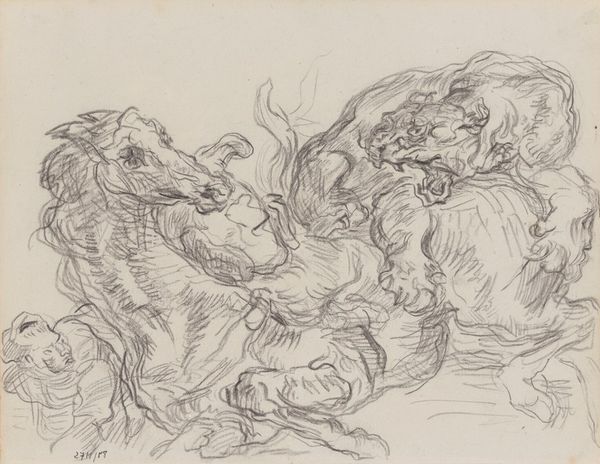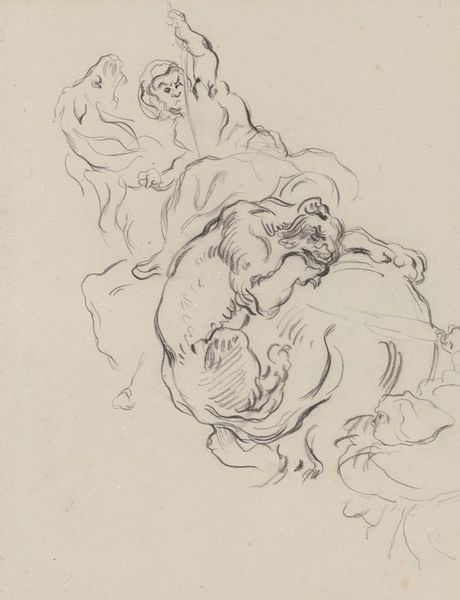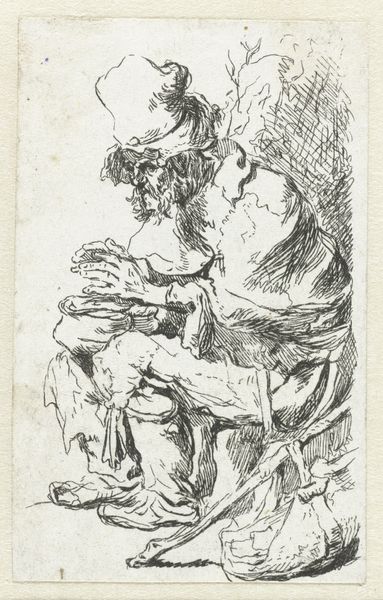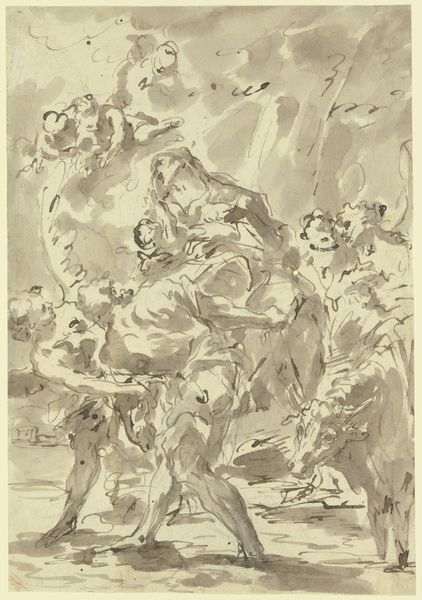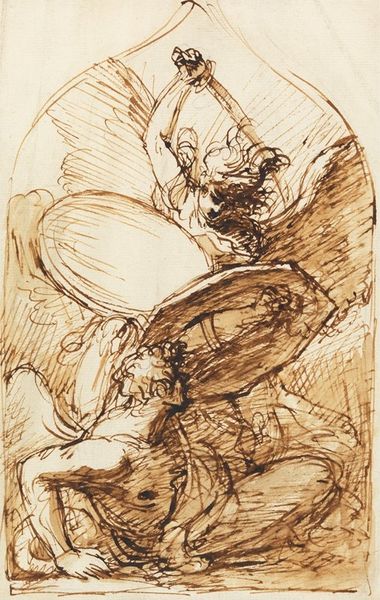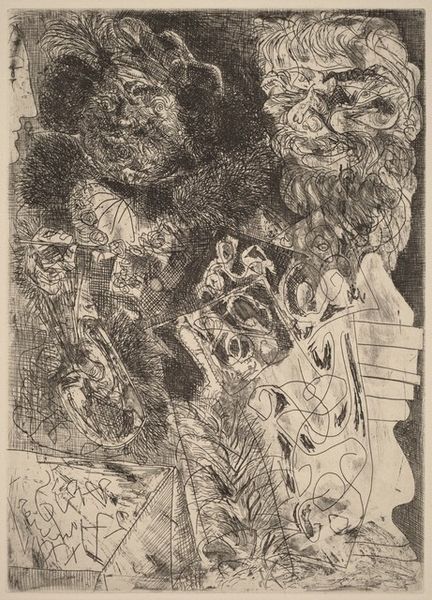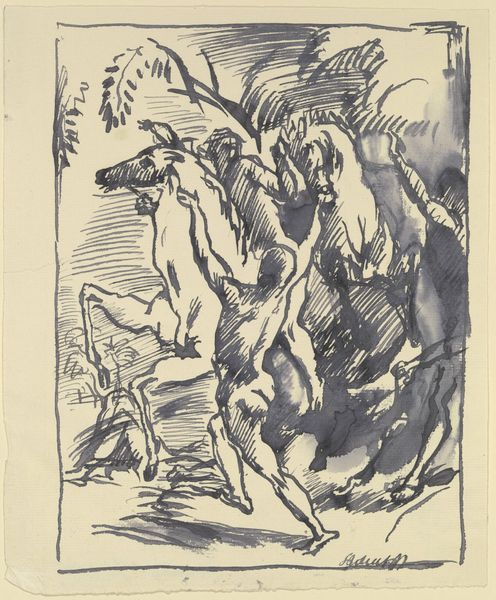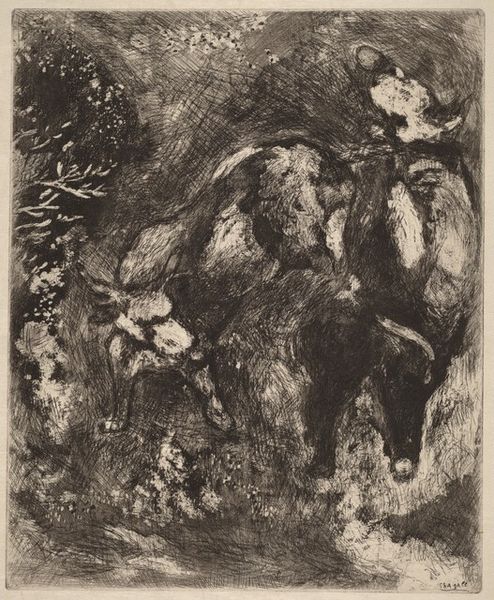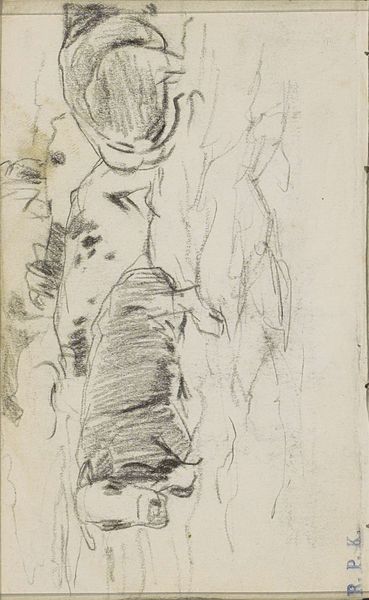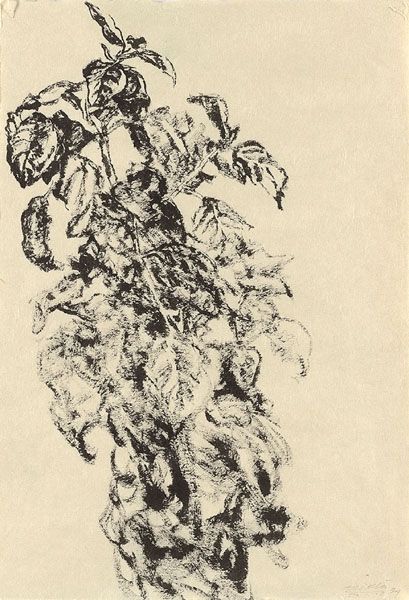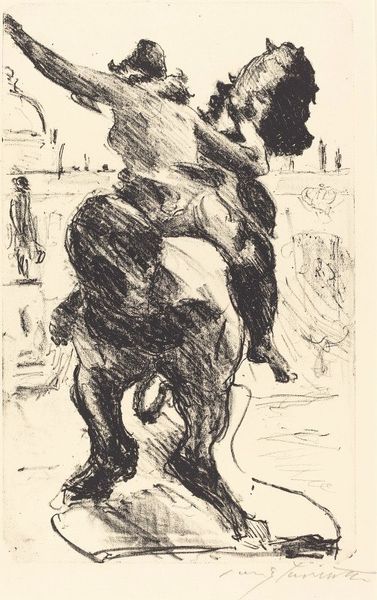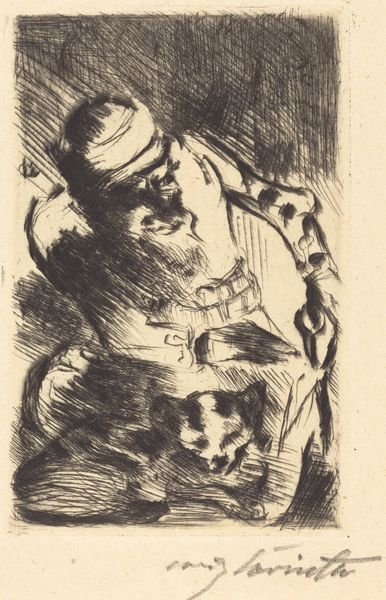
drawing, ink
#
drawing
#
figuration
#
ink
#
line
#
symbolism
Copyright: Public Domain: Artvee
Curator: James Ensor’s ink drawing, "Lion and Tiger in Combat," from 1885-86, is a maelstrom of furious energy, isn't it? The thick, swirling lines give such a sense of dynamic, almost chaotic movement. Editor: Absolutely! My first thought was: power and instability. It's unsettling to look at, not necessarily because of the subject matter but because the very structure of the image feels like it could collapse at any moment. What might that say about late 19th-century anxieties? Curator: The intensity likely reflects Ensor’s broader symbolist interests. Traditional iconography often uses animal combat to represent internal struggle, primal forces, or the eternal battle between good and evil. He uses line as emotion here. Editor: Indeed. And isn't there a layer of colonial critique embedded in this depiction? Ensor painted during the height of European colonial expansion in Africa and Asia. Consider the lion and tiger as symbols of colonizing European forces, locked in an internecine conflict over resources and territories. The instability we see then becomes about the unsustainability of empire itself, and the self-destructive tendencies inherent in its brutal competition. Curator: I see your point about the destabilization of European power...The choice of a sketch, or what feels like a quick study, feels deliberate; an act of almost furious sketching that is indicative of anxiety and inner-turmoil. I see the symbolism more on an allegorical level for the individual and internal conflict; and on an art historical level; perhaps something as fundamental to art making as line itself struggling to free itself, both formally and conceptually. Editor: Fascinating. But let's remember that Ensor's focus on line, rather than polished realism, wasn't just a formal or allegorical experiment. It could also be seen as a disruption of the visual order upheld by the dominant colonial powers. This sketch-like quality disrupts the image itself and questions our perceptions and systems. Ensor’s subversion reflects larger socio-political anxieties brewing beneath the surface of a seemingly stable, colonial world. Curator: Very persuasive—your reading makes Ensor a particularly potent figure within that fin-de-siècle climate of shifting artistic and political sands. Thanks to this context, that initial sense of furious instability gains all the more importance and value. Editor: It is a great lesson in the power of animal representation and how we read images according to socio-political perspectives, isn't it?
Comments
No comments
Be the first to comment and join the conversation on the ultimate creative platform.
